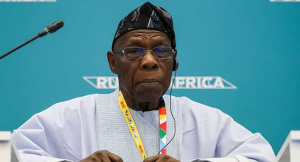
The combined debt of Nigeria’s 36 states has surged to N11.47 trillion as of mid-2024, according to recent data from the Debt Management Office (DMO). This figure, which marks a 14.57% increase from N10.01 trillion recorded in December 2023, highlights the growing financial strain on state governments despite Federal Accounts Allocation Committee (FAAC) distributions and efforts to boost internally generated revenue (IGR).
The DMO’s report reveals that while states’ domestic debt declined from N5.86 trillion to N4.27 trillion, external debt rose from $4.61 billion to $4.89 billion in the same period, largely due to the naira’s devaluation, which raised repayment obligations. As a result, debts in naira terms shot up by 73.46%, with the exchange rate moving from N899.39/$1 in December 2023 to N1,470.19/$1 by June 2024.
“The increasing debt levels, particularly in foreign obligations, paint a worrying picture for the fiscal health of state governments,” the report stated, noting that states’ reliance on federal allocations has made them vulnerable to economic shocks tied to crude oil prices and exchange rate fluctuations.
Reliance on Federal Allocations Continues
An accompanying report by BudgIT highlighted the persistent dependence of state governments on FAAC allocations. The report noted that in 2023, 32 states relied on FAAC for at least 55% of their total revenue, while 14 states sourced over 70% of their income from federal transfers. Only Lagos and Ogun states were exceptions, with both generating significant revenue independently.
“FAAC allocations accounted for at least 62% of the recurrent revenue for 34 states, leaving many states susceptible to external revenue shocks,” the BudgIT report stated.
Lagos and Rivers Lead in Revenue Generation
Lagos State remains the largest revenue generator among Nigerian states, contributing N1.24 trillion or 14.32% of the total state revenue in 2023. Only Lagos and Rivers states generated enough IGR to cover their operating expenses, with ratios of 118.39% and 121.26% respectively. In contrast, states like Akwa Ibom and Bayelsa relied heavily on federal allocations, requiring over five times their IGR to meet operating expenses.
BudgIT’s Recommendations
In light of these fiscal challenges, BudgIT advised state governments to improve domestic resource mobilization. “States need to digitize revenue collection, harmonize taxes, eliminate cash-based transactions, and deploy tax intelligence to identify liabilities,” the report recommended. BudgIT further urged states to leverage public-private partnerships and bolster revenue generation efforts to support critical infrastructure, pay the minimum wage, and invest in human capital development.
As Nigeria’s states continue to grapple with rising debt levels and reliance on FAAC distributions, experts warn that improved fiscal autonomy and prudent economic management will be essential to achieving sustainable growth.








